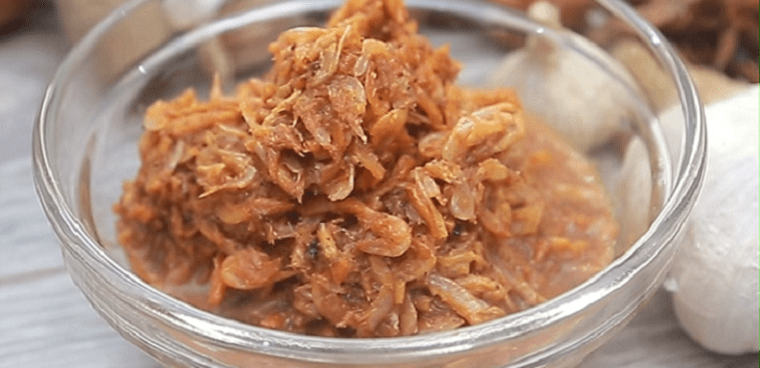-
Preparation
5 hours
-
Difficulty
Easy
A detailed guide on how to make simple, delicious shrimp paste right at home. Let’s join TasteVN into the kitchen to prepare this appealing dish!
Ingredients for Shrimp Paste For 4 people
Fresh shrimp 50 g White wine 150 ml Water 100 ml Sticky rice 600 gr (used to make powder) Regular rice 400 gr (used to make powder) Salt 50 gr
Equipment: Pot, pan, chopsticks, blender,…
How to choose good shrimp
- When selecting shrimp, you should choose freshwater shrimp for making paste, look for shrimp that appear fresh and have a shiny color without any foul smell.
- Pay close attention to the tail of the fresh shrimp, it should be curled.
- If the shrimp has been chemically pumped, the tail will also be curled but will spread out like a fan, and when held, the shrimp feels soft and has a pale white color.
- Observe the back; if it is swollen and fat, it is due to being pumped with chemicals, making the shrimp full and heavy. The shell at the head of chemically pumped shrimp will easily separate from the body.
- Be cautious with shrimp that have been soaked in chemical urea, they will have a swollen belly and back, with liquid oozing from the segments, pale color, strange smell, and the meat will shrink and taste very bland.
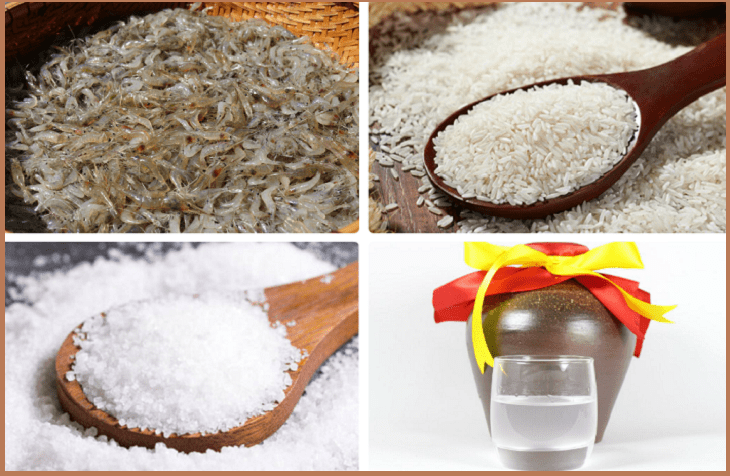
How to Make Shrimp Paste
-
Prepare the shrimp
Put the shrimp in a basket, pick and sort carefully, cut off the antennae at the head, and remove impurities and dirt from the shrimp, then add salt and mix, and rinse several times with water.
Continue rinsing the shrimp until the water is clear and no more sediment is visible.
Be sure to rinse the shrimp thoroughly so that the shrimp paste tastes better and does not spoil.
Tips for cleaning shrimp without fishy smell
- After cleaning the shrimp, you can soak them in diluted salt water, then drain them to reduce the strong fishy smell of the shrimp.
- Alternatively, you can use a little sugar and white alcohol to soak the shrimp for a few minutes to eliminate the fishy smell.
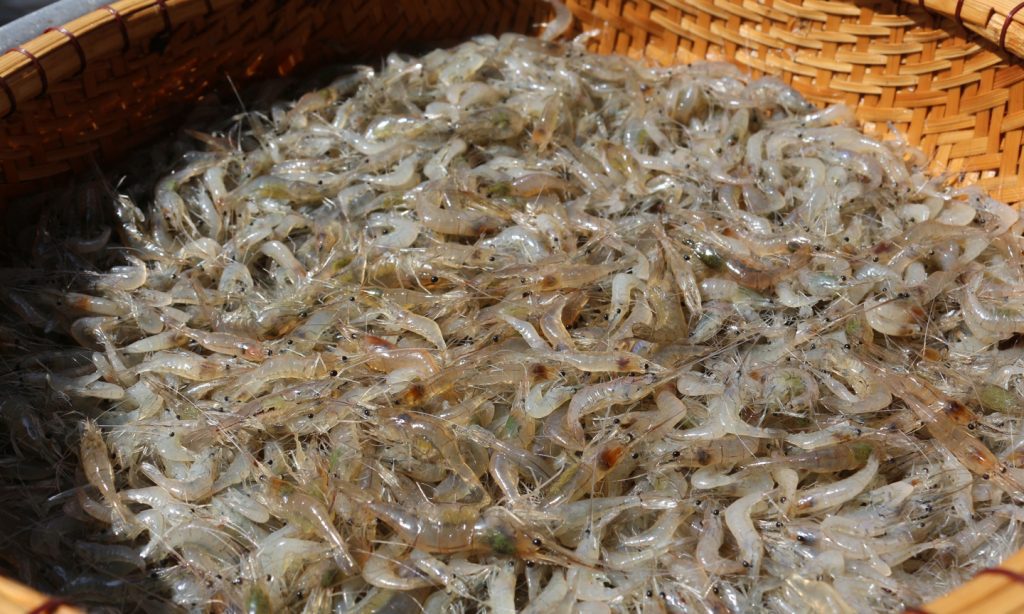
-
Grind the shrimp
Boil a pot of water, dilute the white alcohol and let it cool, then add it to the shrimp and stir gently.
Then take the shrimp out, rinse with clean water, and let them drain.
When the shrimp are drained, put them in a mortar and use a pestle to grind the shrimp until finely mashed.
Or you can use a blender to grind the shrimp. However, it is still recommended to use a pestle to mash the shrimp for a richer and more delicious shrimp paste.
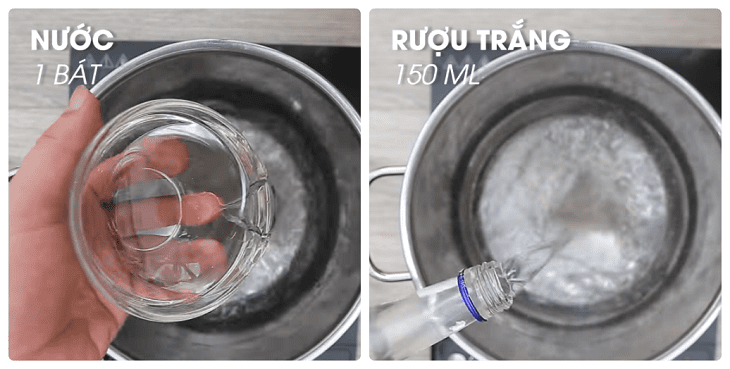
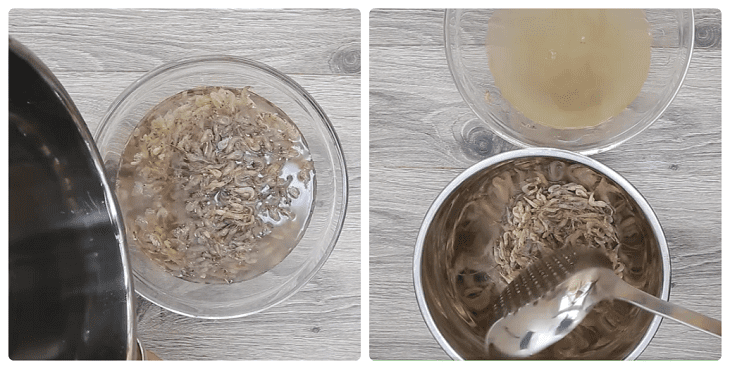
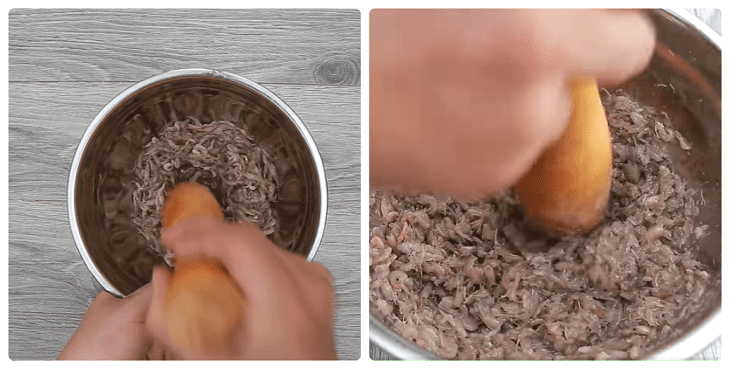
-
Making Rice Flour
Mix two types of rice and soak them in clean water for about 5 – 6 hours. If possible, soak them overnight from the previous evening to save time.
After that, drain the soaked rice in a sieve, rinse it thoroughly, and shake it several times to reduce the moisture. Place it in a cool, ventilated area to let it dry completely.
Prepare a hot pan, then reduce the heat to the lowest setting. Add a portion of the drained rice to the pan and stir continuously with chopsticks.
When you observe that the rice turns a slightly darker yellow, turn off the heat. Keep stirring the rice to make it crispy and change to a deeper yellow while the pan is still hot.
Then transfer the roasted rice to a separate bowl. Repeat until all the rice is done.
Wait for the rice to cool. Prepare a mortar and pestle or a grinder to continue with the grinding step. For this dish, you should grind the rice until it becomes fine powder. This way, the flour will stick better to the meat.
After grinding the flour finely, place it in a glass jar and store it in a cool place for later use. Now you have homemade flour that ensures safety and health.
Note: Do not pour all the rice into the pan at once, but divide it into smaller portions, roasting each part one at a time and stirring continuously to prevent burning; the rice will be crispier and more evenly yellow.
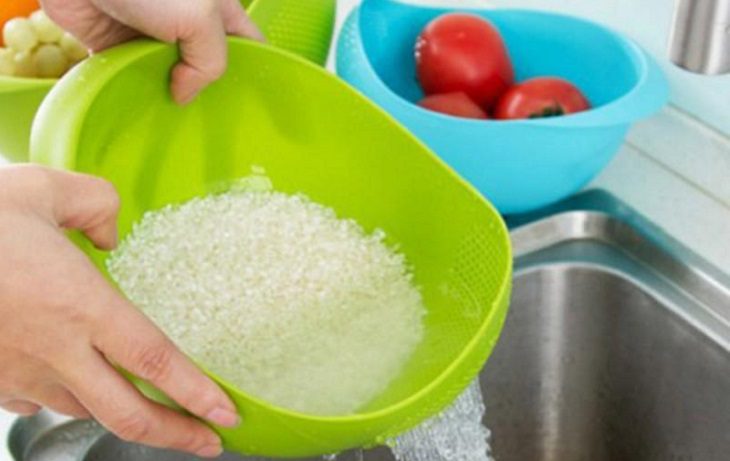
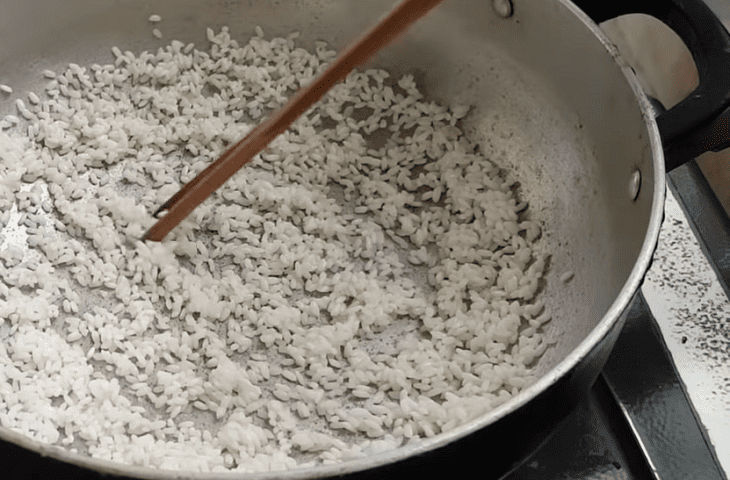
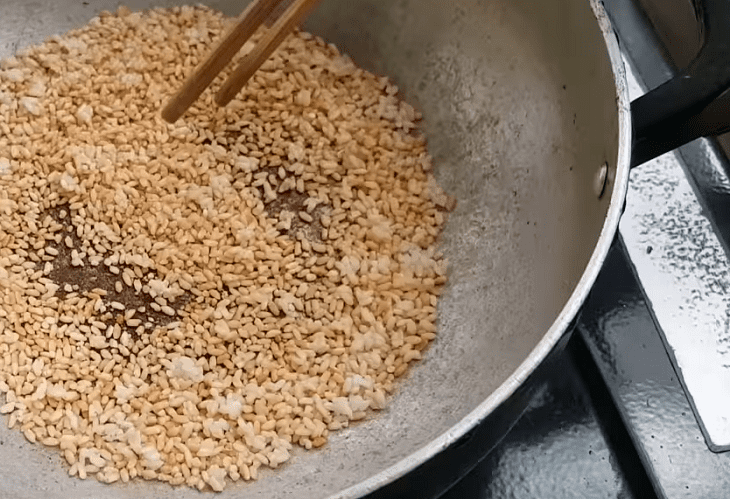
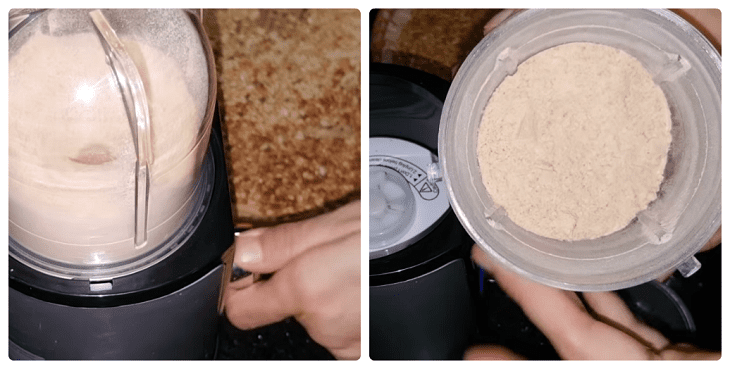
-
Soaking shrimp paste
Put the crushed shrimp into the jar, alternating with a layer of salt, followed by a layer of roasted rice flour. Continue to alternate shrimp, salt, and rice flour until the jar is full.
Leave the jar for 10 – 15 days in a dry environment, and it can be sun-dried at a moderate temperature.
Note: The jar for the shrimp paste needs to be cleaned and rinsed with boiling water for glass jars, then allowed to dry completely. Use a glass jar to easily observe the color of the shrimp paste.
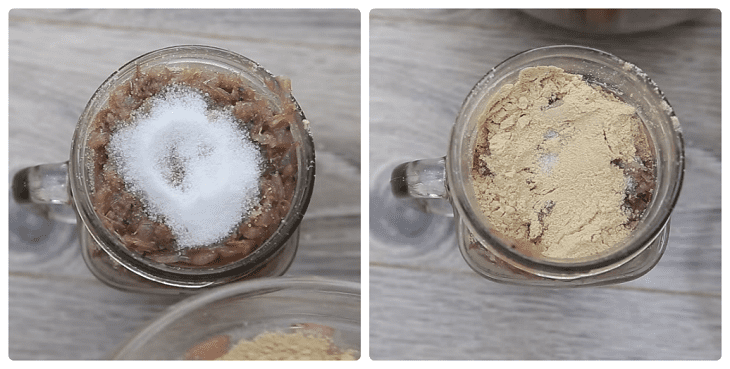
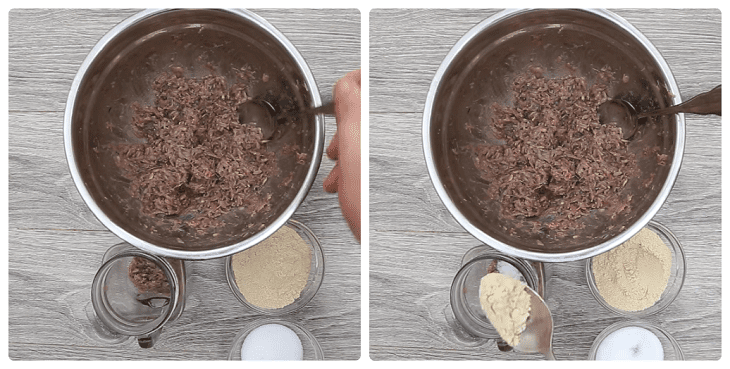
-
Final product
The shrimp paste when completed will have an attractive color, appealing appearance, and the characteristic aroma of shrimp paste along with a rich flavor that pairs perfectly with a bowl of hot rice.
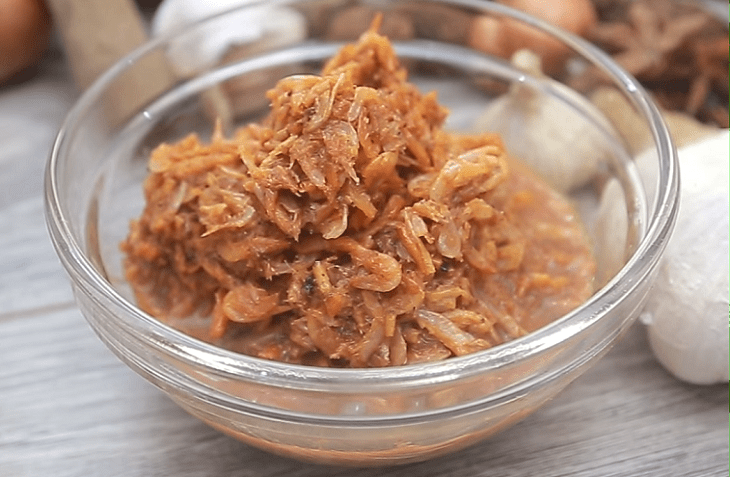
Storage tips and shelf life:
- Be sure to tightly close the lid of the shrimp paste jar to prevent air from entering; this will help the shrimp paste ferment quickly and not spoil.
- Store in a normal temperature environment.
- It can be kept in the refrigerator, with a shelf life of 6 – 12 months.
- It is advisable to use a clean spoon or chopsticks to scoop into a bowl before seasoning to prevent the paste from spoiling quickly.
- If the paste emits an odor, changes color, and has liquid on the surface in the jar, it should not be used anymore!
See more:
Above is the recipe to make shrimp paste that is simple and easy to make at home, to enhance the taste of daily family meals. Wishing you success with this recipe!
*Refer to images and recipes from: iunauan, YouTube channel Feedy VN and YouTube channel Handmade VN
